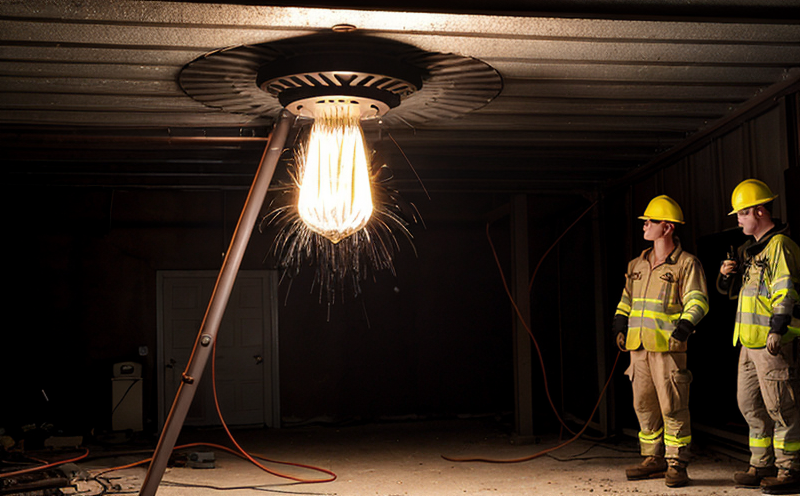Explosion-proof lighting inspection
The importance of explosion-proof lighting in hazardous environments cannot be overstated. Hazardous areas are those where there is a high risk of fire or explosion due to the presence of flammable gases, vapors, liquids, combustible dusts, or fibers. Explosion-proof lighting fixtures provide the necessary protection against these hazards by preventing the ignition source from causing an explosion.
These lights are designed to contain sparks and explosions within the fixture itself rather than propagating them into the surrounding environment. This is achieved through various design features such as pressure relief valves that allow internal pressure buildup to escape harmlessly, encapsulation of components, or a gas-tight housing. In environments where even small sparks can lead to catastrophic failures, ensuring these fixtures meet all relevant standards and regulations is paramount.
The inspection process for explosion-proof lighting involves several key steps aimed at verifying the integrity and performance of these lights. These include visual inspections to check for any signs of damage or wear that could compromise safety, electrical checks to ensure correct operation under specified conditions, and pressure testing to confirm that the housing can withstand internal pressures without failing.
A thorough inspection also involves compliance with international standards such as IEC 60079-23 (for intrinsically safe equipment), EN 50184/EN 50264 (Europe's harmonized standards for explosion protection in lighting devices), and NFPA 70 (National Electrical Code) in the United States. These standards provide stringent requirements that must be adhered to when manufacturing or installing explosion-proof lighting systems.
The purpose of this inspection extends beyond mere compliance; it ensures that every fixture installed in a hazardous area functions correctly and safely, thereby reducing the risk of accidents. Regular inspections are crucial because environmental factors like humidity, temperature variations, and mechanical stress can degrade these lights over time, potentially compromising their protective capabilities.
Given the critical role played by explosion-proof lighting in ensuring safety across various industrial sectors—such as petrochemical plants, refineries, mines, and chemical manufacturing facilities—it is essential that inspections are conducted meticulously. This not only helps maintain regulatory compliance but also enhances overall workplace safety by reducing potential risks associated with improper or malfunctioning equipment.
In summary, explosion-proof lighting inspections play a vital role in safeguarding lives and property within hazardous environments. By adhering strictly to established standards and conducting comprehensive tests, we can ensure that these essential pieces of equipment continue to perform reliably under challenging conditions.
Why It Matters
The necessity of explosion-proof lighting inspections cannot be understated in industries where safety is paramount. Hazardous areas are characterized by the presence of combustible materials, making them inherently risky environments for any electrical equipment. Explosion-proof lighting fixtures serve as a critical layer of protection against ignition sources that could trigger explosions or fires.
The design principles behind explosion-proof lighting focus on containing sparks and preventing external propagation of internal events like short circuits or overheating components. By doing so, these lights significantly reduce the likelihood of catastrophic failures leading to accidents. Regular inspections are therefore crucial for maintaining this level of safety, ensuring that all fixtures remain in optimal condition.
Non-compliance with established standards can have severe consequences, including fines, penalties, and even legal liabilities. In addition to regulatory requirements, many organizations also implement their own internal policies regarding equipment maintenance and inspection schedules. Adhering to these guidelines helps maintain a culture of safety within the workplace while reducing operational risks.
Moreover, regular inspections not only uphold compliance but also contribute positively towards enhancing overall industrial hygiene practices. They provide valuable insights into potential issues before they escalate into major problems. For instance, identifying early signs of wear and tear allows for timely repairs or replacements, extending the useful life of equipment while minimizing disruptions to daily operations.
In conclusion, conducting regular inspections on explosion-proof lighting is not just about meeting legal obligations; it's about fostering a safer working environment and promoting best practices in industrial safety. Investing time and resources into these inspections ultimately leads to better outcomes for both employees and business operations alike.
Benefits
Ensures compliance with international standards, reducing the risk of accidents due to non-compliance penalties.
Promotes a safer working environment by identifying potential hazards early on and addressing them promptly.
Enhances industrial hygiene practices through regular monitoring and maintenance schedules.
Extends the useful life of equipment, reducing costs associated with premature replacements or repairs.
Maintains operational efficiency by minimizing disruptions caused by unexpected failures or breakdowns.
Reduces liability risks for organizations operating in hazardous environments where safety is critical.
Fosters a culture of continuous improvement and best practices in industrial safety management.
Safeguards against environmental impacts from potential accidents involving explosive materials or gases.





